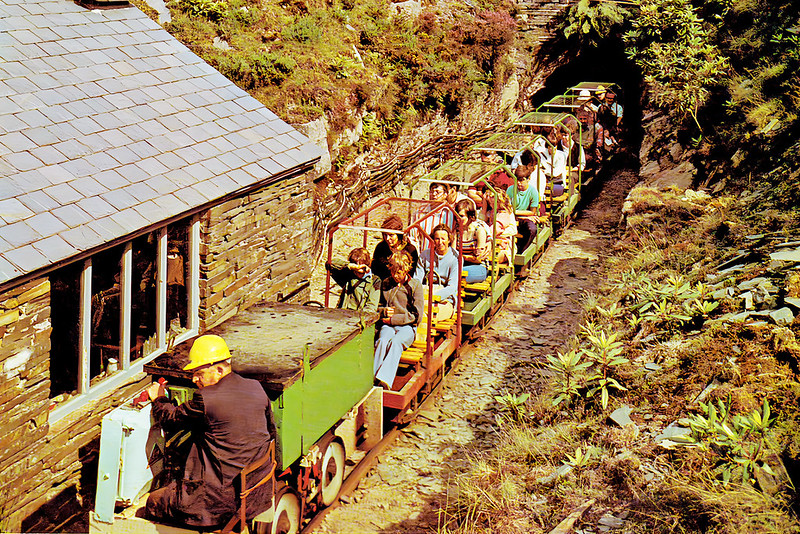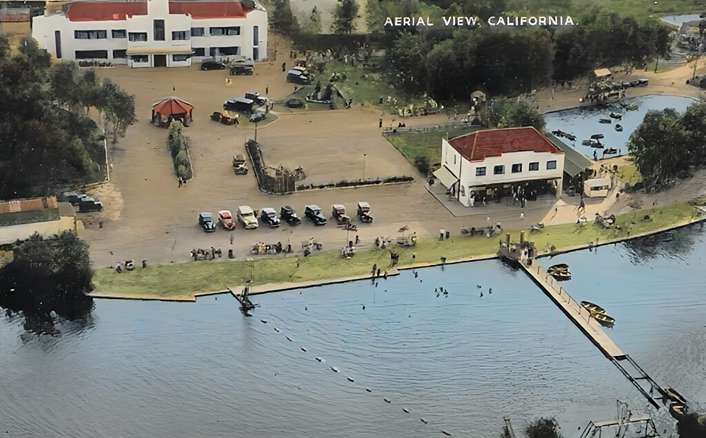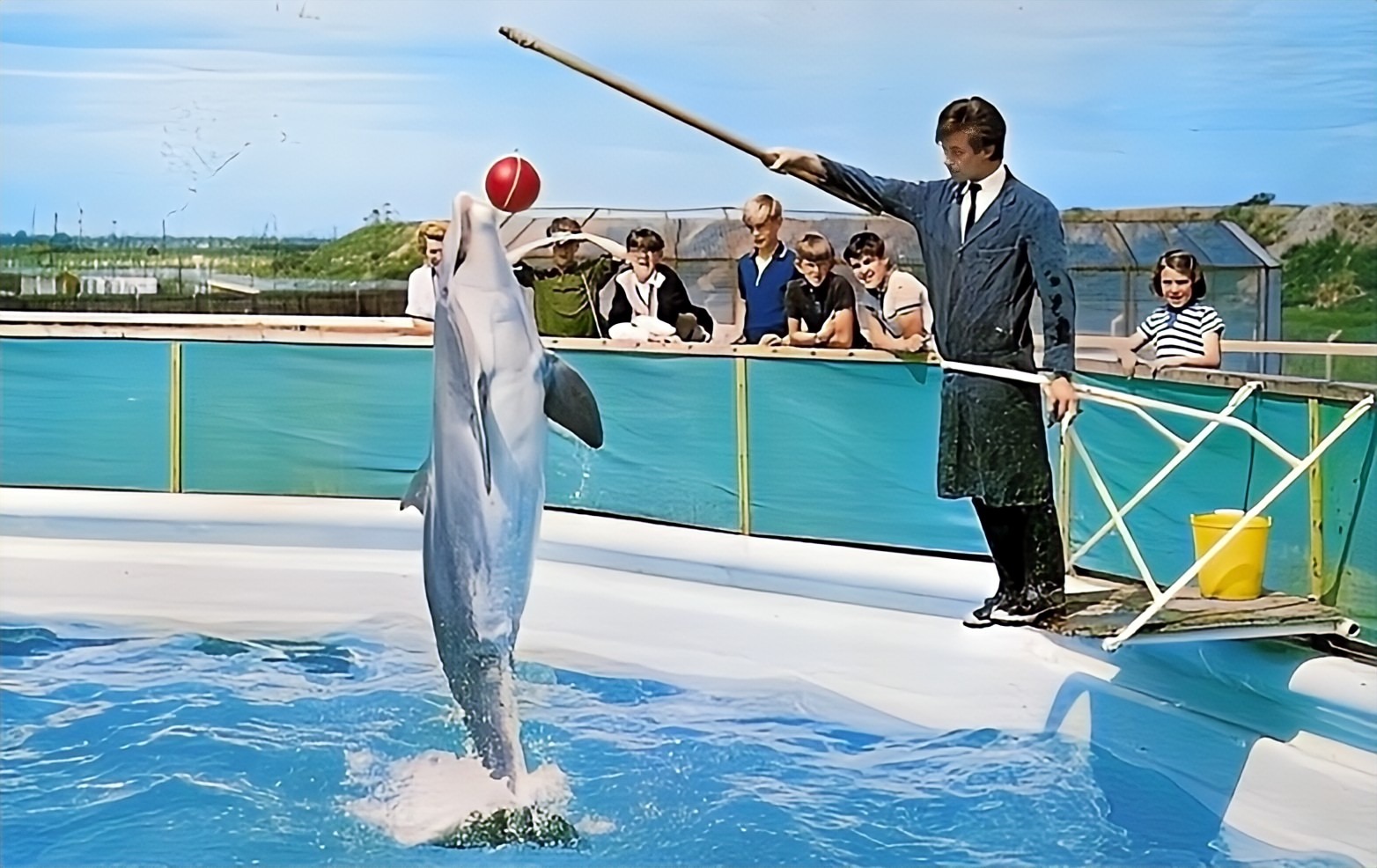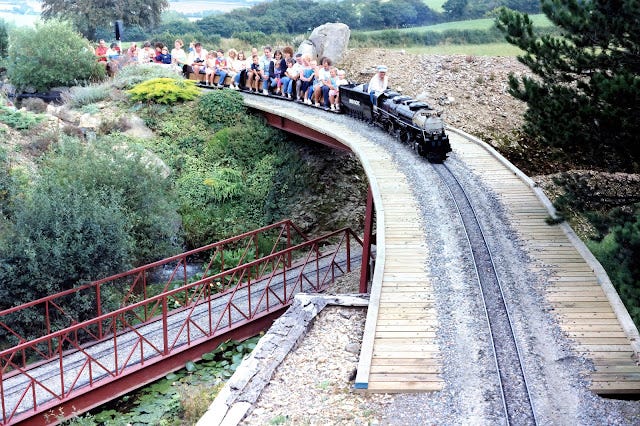The Marineland Morecambe project was a bold venture approved by the local council in 1962. Financed by Manchester-based developer Shearer Estates Ltd, the £160,000 project promised to bring Europe’s first oceanarium to the seaside town. To ensure the project’s success, the council entered into a unique agreement. Marineland (Morecambe) Ltd., the company that would operate the facility, would pay an annual rent of £8,000 to the council. This money would then be passed on to Shearer Estates. The council guaranteed this money for a period of 30 years, whether Marineland paid them or not. After that 30 years, ownership of the building would transfer to the council.
However, their decision to guarantee this payment sparked a lot of controversy. Local ratepayers were outraged, protesting outside the council chambers with banners that read “No guarantee for Marineland.” The council defended its decision, arguing that they would ultimately gain ownership of the building at no cost to ratepayers.

Original plans included a 3,000 seat arena and a marine research laboratory to be run in conjunction with Lancaster University. The complex was to be operated by a trio of animal experts – Ken Denham, Robert Jackson (owner of the Welsh Mountain Zoo in Colwyn Bay) and ‘TV zoologist’ George Cansdale.
The plans for the original building were later scaled back and a smaller simpler structure was chosen. Capacity in the arena was reduced to 900 seats. A letter to the local newspaper stated “I cannot see that the designer has used a great deal of imagination…my wife thinks it looks like a set of modern toilets”.

Construction started in August 1963. The site would feature two outdoor tanks for dolphin shows along with an indoor aquarium and an upscale fish restaurant known as The Lobster Pot. The restaurant was to be operated under lease by the Rank Organisation.
In December 1963 the government authorised the slaughter of over 300 sea lions on the Farne Islands, off the coast of Northumberland. Salmon fishermen claimed the seals were eating all the fish and destroying their nets. Three of the seals were rescued – Isabel, Christine and Buster – and these were moved to the Welsh Mountauin Zoo until their new Marineland home was ready.
In 20th May 1964 a specially charted DC-7 touched down at Ringway Airport containing a wide assortment of animals from Florida. Nicknamed ‘The Flying Ark” the 15-ton airlift contained a 9ft boa constrictor, 150 tropical fish, 8 dolphins, 7 turtles, sharks, raccoons, lizards, hawks, eagles and rattlesnakes. It also contained several palm trees which were a gift from the mayor of Miami.

The consignment was to be shared between Marineland and the Welsh Mountain Zoo. The dolphins, which came from the Miami Seaquarium, traveled on foam mattresses and were sponged down and turned over periodically. Representatives from the Seaquarium were also on the plane and remained in Morecambe for a while afterwards. The animals were transported to their new home under a police escort and the whole event attracted huge publicity with all major TV stations and newspapers covering the event. Never one to miss out on his own publicity, Fred Pontin sent his private helicopter loaded down with fresh fish to feed the new arrivals.
Several animals died before the site even opened to the public and there were rumours circulating of “heavy losses”. The site manager said that the total value of losses was no more than £150 “which might sound a lot but it’s a small figure when you think of the thousands of pounds of livestock we have here”. Some were dead on arrival “but we expected that, and in fact, were surprised that there were not more casualties”.
The site opened to the public on 9th June 1964 with the official ceremony performed by Capt Bill Gray of the Miami Seaquarium. The first season was a success with over 200,000 visitors.


Early attractions included penguins, flamingos, turtles and 5 alligators from Mississippi who’s enclosure featured a “tropical rainstorm” complete with sound effects. Chimpanzees were later added who held daily tea parties.
In Jan 1965 the building was battered by gale force winds which smashed windows and flooded the building, A one-ton rock was hurled through a doorway and 4 people were treated for injuries from flying glass. Another storm in September 1967 smashed all the windows on the west side, cutting off power and trapping 18 people inside.
Things appeared to be going well so it came as a huge shock when Marineland announced they were entering liquidation in September 1965. The attendance figures were said to be “very much down” over the previous year. Four council officials offered to give their time for free in order to keep the animals fed. By this time only 3 of the original dolphins were still alive.
Pentland Hick, the owner of Flamingo Park Zoo, expressed an interest in taking over but later backed out due to the complicated political nature. Nobody else wanted it so the council reluctantly took control. A packed meeting was attended by 350 local residents who were unanimous in their disapproval of the idea. But the council didn’t have much choice so the takeover went ahead.
Ken Denham, the curator of Marineland, offered his services in the new venture but was told he wasn’t needed. The former general manager/accountant was also let go. Robert Jackson was retained as an advisor until his untimely death in 1969.
The council held an auction in March 1966 selling off surplus furniture and equipment from the site including a large quantity of souvenirs from the gift shop. In a cost saving measure, the manager of the nearby swimming pool would now have dual responsibility by also having to run Marineland.
Around the same time George Cansdale teamed up again with Shearer Estates to build another Marineland in Skegness. Phase one (an aquarium) was completed but the project then ran into financial difficulties and it too was taken over by the local council. Phase two (a dolphin pool and arena) were never built.
By June 1966 only one dolphin remained at Morecambe. One had been sold and the other 6 had died – 3 after ingesting foreign objects. The last survivor of the original batch, Smiley, died in November 1969. The following month three new dolphins arrived which were caught “wild and untrained” in the Gulf of Mexico by Florida native Nevin Stewart. The plane carrying them over was diverted to Heathrow which meant a lengthy road trip up to Morecambe. They were named Hattie, Sadie and Rocky.

The Lobster Pot restaurant was closed by Rank at the end of 1966 due to a lack of custom not helped by the non-existent parking. It reopened in 1971 after the lease was transferred to local cafe owner Arthur Jevons.
The first official suggestion of animal cruelty was raised by Councillor Peacock at a 1974 council meeting after they’d authorised spending £8,000 buying two more dolphins from Panama. He said it was “callous” to keep these intelligent creatures in captivity. Someone else said dolphins “had better brains then we did” to which another member joked that “we should have some on the council”. Councillor Ball pointed out that “dolphins are an essential attraction at Marinerland and vital to the economy of the district”.
During the mid-1970s the park was still attracting around 150,000 annual visitors and was being advertised as “Britain’s Number 1 Aquarium”. But the council said the complex was losing around £50,000 a year. Animals on site included dolphins, sea lions, penguins, turtles and alligators. In 1976 Rocky hit the headlines after rescuing a budgie which had fallen into his pool. The bird made a full recovery.
After 11 years under council control the complex was leased to television and casino group Trident in 1978. At the time they also owned Windsor Safari Park and Scarborough Zoo. In 1983 the lease was taken over by Ocean World (Marine) Ltd who ran it until the end.

In 1984 Rocky became the last remaining Dolphin, along with one sea lion. In August 1988 a 14-year old female named Lady was acquired from Whipsnade Zoo in the hope they would breed together. A few weeks later they both appeared in an episode of Jim’ll Fix It. Despite annual attendance now hovering around 80,000 the complex was still said to be profitable.
In September 1988 four members of the Animal Liberation Front were arrested while trying to break into Marineland with the intention of releasing Rocky into the sea. Protests became a common site outside the building. In 1989 Lady became pregnant but the joy was short lived as the calf was miscarried and Lady died of blood poisoning. A “funeral” was held by protesters carrying dolphin-shaped coffins and wreaths. In 1990 a 5,000 name petition was submitted to the council during a riotous public meeting demanding the closure of Marineland. The Mail on Sunday started a campaign to raise funds to release Rocky into the wild and over £120,000 was raised. A consortium of animal rights groups got involved who were later accused of spreading misinformation.
In November 1990 Rocky was moved to Flamingoland due to a breakdown of the water heater in Morecambe. Many experts and scientists advised against releasing him into the wild and said he wouldn’t be able to survive after spending 20 years in captivity. Most believed he should live out his golden years at Flamingoland in the company of three female dolphins. Three independent vets said that 25-year old Rocky was too old and not fit to travel. Despite this, he was put on plane and flown to the Caribbean. Here he spent several months living in a fenced off lagoon and was later joined by two dolphins from Brighton aquarium, Missie and Silver. All three were later released into the wild. Their fate remains unknown.
The last of the creatures in the aquarium left Marineland in June 1991 and all found new homes elsewhere. The building was demolished in Feb 1992




